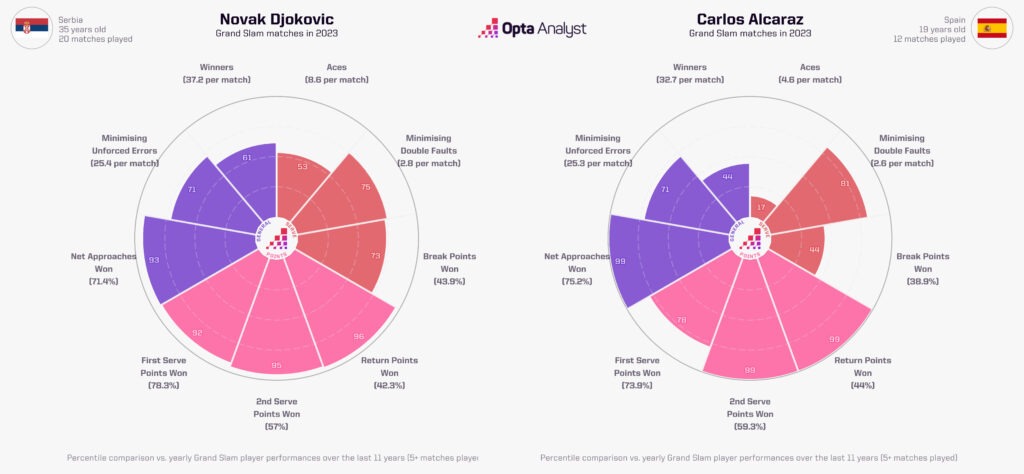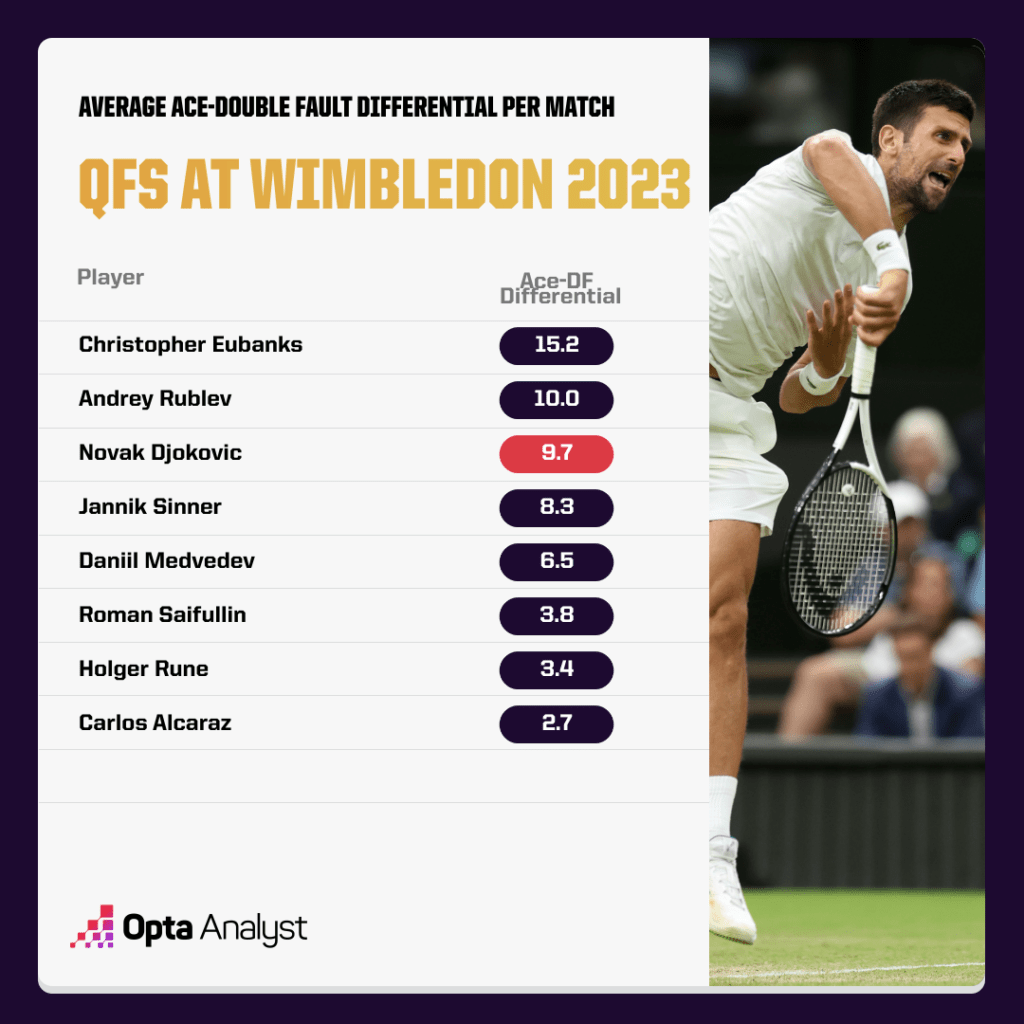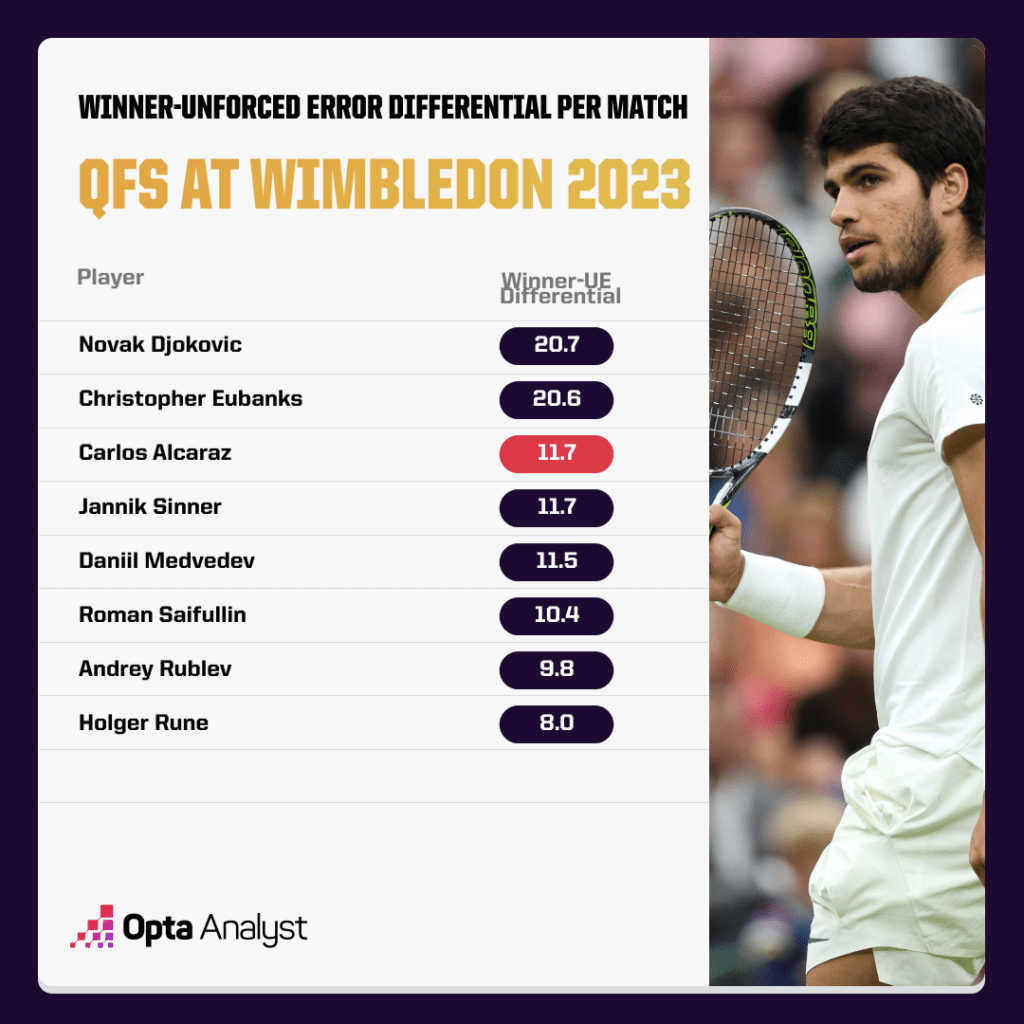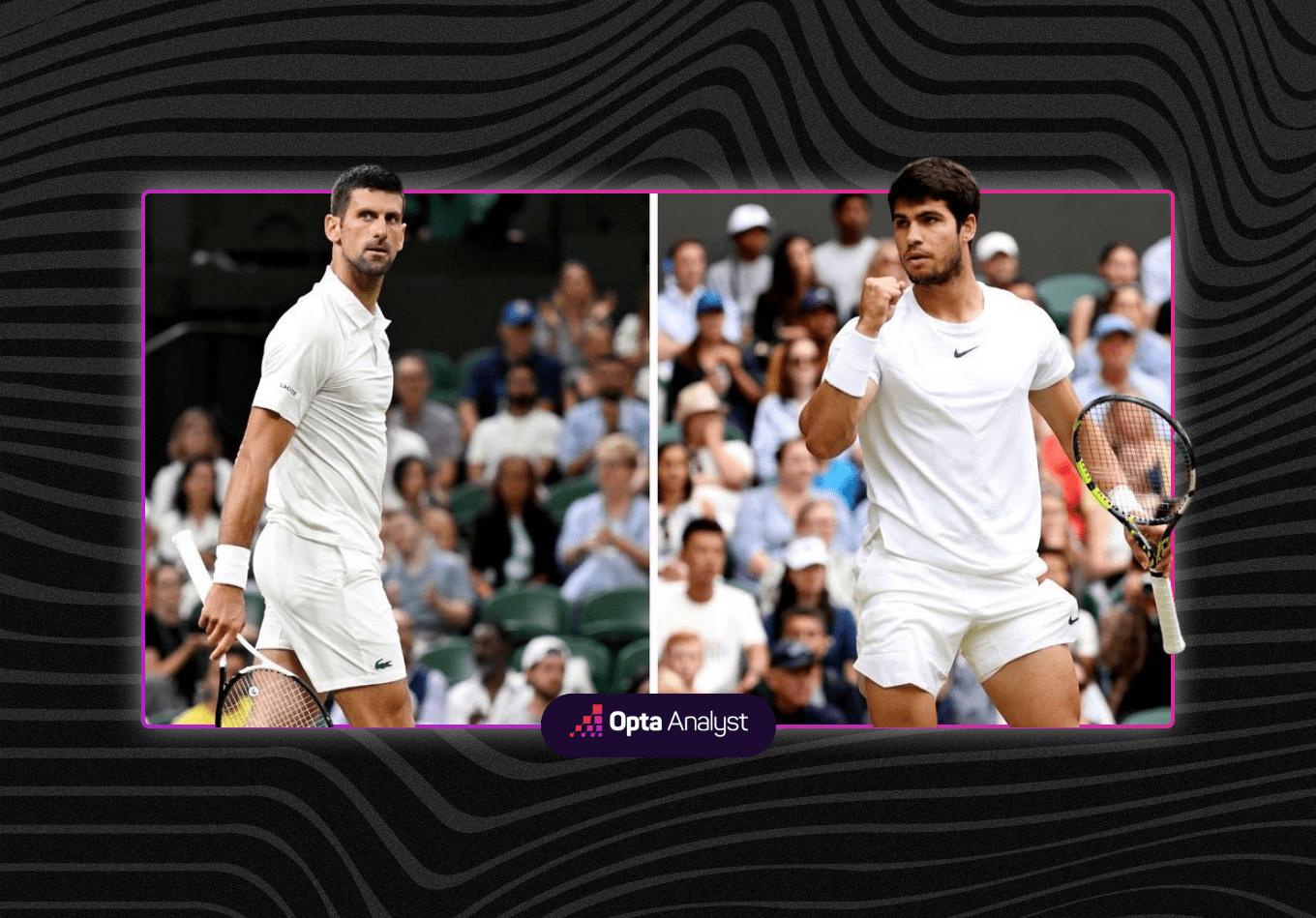With the Big Three, or Big Four depending on who you talk to, we have been spoilt. This year’s Wimbledon final is the 10th time since 2000 where the first and second seed will meet, something that had only happened six times over the rest of the Open Era.
We’ve got the premier matchup most wanted at the start of the tournament, and the 2023 Wimbledon final will be a clash of two generations. There’s an age gap of 15 years and 349 days between Novak Djokovic and Carlos Alcaraz, making it the second-largest at a Wimbledon final in the Open Era, after Ken Rosewall and Jimmy Connors in 1974.
Before we get the popcorn out though, let’s examine how it could all go down.
Paths to the Final
It seems like with each passing match Novak Djokovic sends tennis records tumbling. He could become the first player in the Open Era to win the Australian Open, Roland-Garros and Wimbledon in the same calendar year multiple times, and equal Margaret Court for the most among male and female players with a 24th grand slam title.
At 36 years and 55 days old, Djokovic could become the oldest winner of the men’s singles title at Wimbledon in the Open Era, crystallising just how extraordinary it is to see him so unbothered on the way to another second Sunday.
The Serbian great has made very good players look powerless at times over the past fortnight at the All-England Club, which makes the matchup with Alcaraz so tantalising, because he too is seemingly battling the record books as much as the opponent across the net.
As if to reinforce just how good he is at such a burgeoning stage in his career, Alcaraz is the first player in the Open Era to reach the men’s singles final as the first seed at Wimbledon before turning 21. The world number one is one of only four males to hold a winning percentage of 80% or higher at Grand Slams before 21, along with Björn Borg, Mats Wilander and Rafael Nadal. Meanwhile, Alcaraz and Djokovic are the last two players in the Open Era to achieve 35 match wins at Grand Slam events by that age.
Carlos Alcaraz (1) Path to the Final:
Jeremy Chardy (R1) 6-0 6-2 7-5
Alexandre Muller (R2) 6-4 7-6 (2) 6-3
Nicolas Jarry (R3) 6-4 6-7 (6) 6-3 7-5
Matteo Berrettini (R16) 3-6 6-3 6-3 6-3
Holger Rune (QF) 7-6 (3) 6-4 6-4
Daniil Medvedev (SF) 6-3 6-3 6-3
Novak Djokovic (2) Path to the Final:
Pedro Cachin (R1) 6-3 6-3 7-6 (4)
Jordan Thompson (R2) 6-3 7-6 (4) 7-5
Stanislas Wawrinka (R3) 6-3 6-1 7-6 (5)
Hubert Hurkacz (R16) 7-6 (6) 7-6 (6) 5-7 6-4
Andrey Rublev (QF) 4-6 6-1 6-4 6-3
Jannik Sinner (SF) 6-3 6-4 7-6 (4)
Their first matchup in Madrid last year was a thrilling contest but despite spectacular tennis for just over two sets, the dream matchup that was billed at Roland-Garros turned into a nightmare for Alcaraz, after he suffered debilitating cramps in this year’s semi-final.
The question ultimately, with both of their previous encounters coming on clay, is how can Alcaraz adapt to Djokovic on the quicker grass, with both chasing history?

The Case for Djokovic
If there’s one thing that highlights Novak Djokovic’s constant search for refinement in his career, look no further than his serve. Pardon the comparison, but the later stages of his career have been characterised by Federer-like precision on serve, lasering in on the corners and gaining superiority in points.
At the start of the last decade, Djokovic’s ace-to-double fault differential was +0.3 per match. It was something the 23-time grand slam winner had to improve over time, to the point where he hit a career-best differential per match of +4.9 in 2021.
Coming into Wimbledon this year Djokovic was at +3.5 per match, but on the way to the final at SW19, he trailed only Christopher Eubanks (+15.2) and Andrey Rublev (+10.0) among the quarter-finalists at +9.7.
While an ace-to-double fault differential could be a drop in the ocean over the course of a match let alone a season, it’s an aspect that reflects the gradually increasing difficulty of returning Djokovic’s serve, particularly on pressure points.
Naturally, his second serve at the age of 36 might not have as much bite as it once did, but Djokovic still manages to keep it from exposure. In comparison to Alcaraz’s 20, Djokovic faced an unfathomably low five break points over the opening four rounds of the tournament. Despite facing break point six times against Jannik Sinner in Friday’s semi-final – with two of those coming in the reigning champion’s opening service game – it was a match defined by the Italian’s befuddlement on the return of serve, with Djokovic saving on all six occasions, and keeping that exposure to a relative minimum.
There’s obviously more to it but if Djokovic can keep Alcaraz guessing on the return of serve, he’ll gain immediate ascendancy on the way to a record 24th Grand Slam.

The Case for Alcaraz
Even by his own admission, the most important dynamic for Alcaraz is not necessarily quantifiable, with the need to control his nerves in order to physically compete. The weight of the moment visibly overcame the 20-year-old at Roland-Garros, highlighting how this final will be just as much mental as it would be physical, if not more.
Something Alcaraz’s path to the final has also highlighted, particularly the semi-final victory against Daniil Medvedev, is the attritional and tactical quality of his game. Among the eight quarter-finalists at this year’s event, only one averaged fewer winners per match than Alcaraz’s 34.7 – Medvedev, at 33.8.
Much like their first encounter at Indian Wells earlier this season, Alcaraz consistently attacked the net to exploit Medvedev’s deep return position, winning 28 points at the net – his highest of the six matches at Wimbledon this year.
The 20-year-old has won 75.2% of net approaches at Roland-Garros and Wimbledon this year, ranking in the 97th percentile among his peers. However, the task of wearing Djokovic down is a trickier proposition than wearing Medvedev down due to the Serb’s superior court coverage and positioning.
Alcaraz’s winner to unforced error differential per match this year at Wimbledon (+11.7) is much lower than Djokovic’s (+20.7) but rally length and focus will be critical.

Enjoy this? Subscribe to our mailing list to receive exclusive weekly content. And follow us on Twitter too.
